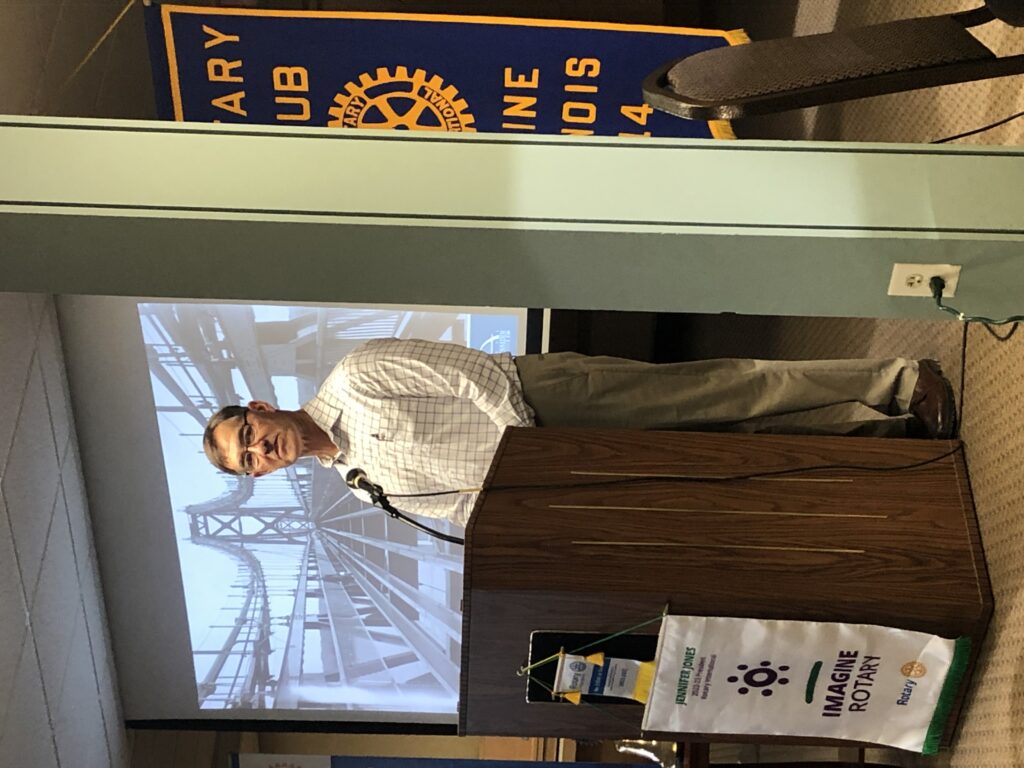Family-friendly holiday events planned across QC
QCBJ News Staff

George Ryan, the Interstate 74 corridor manager, discusses the ongoing demolition work on the old I-74 bridge at the Moline Rotary Club on Monday, Jan. 9. CREDIT JENNIFER DEWITT
The arduous process of dismantling the old Interstate 74 bridge quietly hit a milestone on Monday, Jan. 9, as the last chunk of concrete pavement was removed from the twin spans by a demolition crew.
“As of 9 a.m. today we finished removing all the decking on the bridge,” Tom Schebler, a project engineer for Helm Civil, told a…

Get immediate, unlimited access to all subscriber content and much more.
Learn more in our subscriber FAQ.
Do you want to read and share this article without a paywall?
